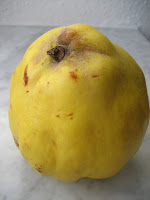 Day of the Dead is one of the most important holidays in Mexico. Although everything is about death, this is one of the most colourful holidays I have ever experienced. It was completely new to me as in Europe death is shown with dark colours.
Day of the Dead is one of the most important holidays in Mexico. Although everything is about death, this is one of the most colourful holidays I have ever experienced. It was completely new to me as in Europe death is shown with dark colours.
Celebration takes place on 1st and 2nd of November and during these two days the spirits of the dead are expected to visit their homes. And the family members are doing different rituals to welcome the souls of the dead on their visit. The celebration is a mixture of pre-Hispanic and Roman Catholic traditions.

On November 1st families build altars with offerings, colourful adornments, like fresh seasonal flowers and colourful paper cut-outs. These altars have a picture of the dead family members and around them all their favourite things are arranged, including food and drinks. Town squares have also altars with the offerings to the souls of the dead.

"Pan de Muerto" or Bread of the Dead is a sweet type of bread made of yeast dough with a touch of orange and anise. It is baked for the dead and put on the altar. The important thing about this bread is its shape. The small ball in the middle symbolizes the skull, and the figures on the side symbolize skeleton bones. Unfortunately I did not manage to take a picture of the bread after being baked.

On November 2nd families visit the graves and arrange second ofrenda. Some families even bring mariachis (traditional musicians) who sing the favourite songs of the dead person. Graveyards are adorned with the most colourful flowers and paper cut-outs, very beautiful. The same type of flowers have been used by Aztecs when honouring the dead.

The symbol of the death in Mexico is La Catrina, fancy dressed female skeleton.

 Pico de gallo is a Mexican salsa eaten with tacos, but to be honest I could eat it all the time.
Pico de gallo is a Mexican salsa eaten with tacos, but to be honest I could eat it all the time.








 The discs are dissolved in milk or water and the froth is made with a molinillo, a traditional Mexican froth maker.
The discs are dissolved in milk or water and the froth is made with a molinillo, a traditional Mexican froth maker. But in small towns in the areas where cacao beans are grown you can even buy small packages with cacao beans, sugar and cinnamon for mixing as you like and making your own chocolate at home. Yes, nothing can beat that!
But in small towns in the areas where cacao beans are grown you can even buy small packages with cacao beans, sugar and cinnamon for mixing as you like and making your own chocolate at home. Yes, nothing can beat that!















